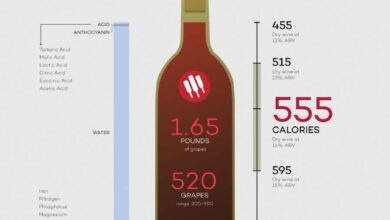Skinny Animals: Causes and Care for Underweight Pets

As pet owners, we must watch for unexplained weight loss in our animals. It can signal a problem needing quick vet care. Look for visible signs of an underweight pet.
These signs include a prominent rib cage, obvious shoulder blades, and a very narrow waist. You might also see a visible spine and ribs. Changes in diet, exercise, or stress can cause short-term weight loss.
Ongoing weight loss may point to more serious issues. These could be internal parasites, medical illnesses, or dental problems. If you notice these signs, take your pet to the vet right away.
Key Takeaways
- Unexplained weight loss in pets can be a sign of an underlying problem that needs veterinary attention.
- Visible signs of an underweight pet include a prominent rib cage, obvious shoulder blades, a very narrow waist, and visible spine and ribs.
- Temporary weight loss can occur due to changes in diet, exercise, medication, or stress, but persistent weight loss may indicate more serious issues.
- Owners should be vigilant in monitoring their pet’s body condition and seek veterinary care if they notice any concerning changes.
- Addressing the underlying cause of weight loss is crucial for the pet’s health and wellbeing.
What Does an Underweight Pet Look Like?
Spotting an underweight pet is vital for their health. Look for a prominent rib cage that’s easily seen and felt. Also, check for visible shoulder blades and a narrow waist.
Your pet’s spine and ribs may show through their coat. Some breeds naturally look leaner. Always consult a vet to assess your pet’s body condition accurately.
Prominent Rib Cage
Obvious Shoulder Blades
Very Narrow Waist
Visible Spine and Ribs
“Maintaining a healthy weight for dogs is essential for their overall health and longevity. Malnutrition weakens the immune system in underweight dogs, making them more susceptible to illnesses and infections.”
Keep an eye out for signs of an underweight pet. This helps ensure they get proper care and nutrition. Work with your vet to help your pet reach a healthy weight.
A healthy weight promotes your pet’s well-being and quality of life. Regular check-ups can help catch weight issues early.
Temporary Causes of Weight Loss in Pets
Rapid weight loss in pets can be worrying. Sometimes, changes in a pet’s environment or lifestyle cause temporary weight changes. These aren’t usually serious, but owners should watch their pets carefully.
If weight loss continues, consult a vet. It’s important to monitor your pet’s health closely.
Some common temporary reasons for pet weight loss include:
- Switching to a new pet food that the animal doesn’t find as appealing
- Suddenly increasing exercise levels
- Side effects from vaccinations or medication
- Stress from recent life changes like a move or adding a new family member
Often, a pet’s weight will return to normal within weeks. This happens as they adjust to new routines or environments. However, keep an eye on your pet’s health.
If the temporary weight loss doesn’t improve, seek veterinary advice. Also, consult a vet if your pet seems unwell.
“Rapid weight loss of more than ten percent of a dog’s body weight in a short time can be concerning.”
Understanding common reasons for pet weight loss helps owners assess their pet’s health. They can decide if weight changes are temporary or need veterinary attention.
Serious Causes of Weight Loss Requiring Vet Attention
Pets losing weight without clear reasons may have serious health issues. Internal parasites can harm appetite and nutrient absorption. This leads to dangerous serious pet weight loss and poor nutrition.
Medical conditions like diabetes and liver disease can cause underlying causes of pet weight loss. Thyroid problems and gut disorders are also common culprits.
Painful dental issues make eating hard, causing unexplained medical conditions causing pet weight loss. Quick vet diagnosis and care is vital in these cases.
Internal Parasites
- Heartworms, tapeworms, and hookworms can compromise a pet’s appetite and nutrient absorption
- Leading to dangerous weight loss and malnutrition
Medical Illnesses
- Diabetes
- Liver disease
- Thyroid problems
- Gastrointestinal disorders
Dental Problems
Painful dental issues that make eating difficult can contribute to unexplained weight loss.
“Prompt diagnosis and treatment by a veterinarian is crucial in these cases.”
Evaluating Your Pet’s Body Condition Score
The Body Condition Score (BCS) helps assess your pet’s weight status. It involves evaluating their appearance and feeling their body. Understanding your pet’s BCS allows you to maintain their healthy weight.
For dogs, a BCS of 1 or 2 out of 5 is dangerously thin. A score of 2-3 might mean your dog needs more calories. This could be due to their metabolism or activity level.
Cats use a 1 to 9 BCS scale. A score of 1-2 is very underweight. A 3-4 may indicate dietary changes are needed. Consult your vet to accurately assess your pet’s BCS.
| Pet Type | Underweight BCS Range | Healthy BCS Range |
|---|---|---|
| Dogs | 1-2 (out of 5) | 2-3 (out of 5) |
| Cats | 1-2 (out of 9) | 3-4 (out of 9) |
Regular pet body condition score checks are key to assessing pet weight. They help in determining if pet is underweight. Work with your vet to keep your furry friend at a healthy weight.

Skinny Animals: Tips for Underweight Pets
Is your pet underweight? There are steps to help them regain a healthy weight. Approach the process gradually and consistently for the best results.
Gradually Increase Food Portions
Slowly increase the amount of food at each meal. This helps your pet’s digestive system adjust. Aim for a 10% increase over a week, then check your pet’s progress.
Make Food More Appealing
Add warm water or canned food to dry kibble. This can make meals more appetizing. Try high-quality protein sources like lean meat or eggs to boost calories.
Consider Changing Pet Food
If weight gain is still a challenge, ask your vet about higher-calorie pet food. This can provide extra nutrients and energy for your underweight pet.
Monitor your pet’s progress consistently. Be patient and follow a step-by-step approach. These methods can support your pet’s journey to a healthy weight.
Gradually increase food portions and make meals more appealing. Consider changing pet food if needed. Your pet can reach a healthy weight with your care.
Why Being Underweight is Dangerous for Pets
A skinny pet isn’t always a healthy one. Being underweight can pose serious health risks for pets. Inadequate nutrients can lead to a lower quality of life and increased health problems.
Lack of Nutrients
Underweight pets may lack essential vitamins, minerals, and nutrients crucial for their well-being. This deficiency can weaken their immune system, making them more prone to infections. It can also reduce energy levels, making it harder for pets to stay active.
Increased Disease Risks
Underweight pets face higher risks of diabetes, heart disease, and kidney problems. Their bodies struggle to regulate blood sugar, blood pressure, and other vital functions. Malnutrition can also impair their ability to fight off infections.
Addressing the cause of weight loss is crucial for a pet’s overall wellbeing. Ignoring the risks of underweight pets, health dangers of skinny animals, and consequences of malnutrition in pets can have serious long-term effects.

“Being underweight can severely compromise a pet’s health and quality of life. It’s essential to work closely with your veterinarian to ensure your pet maintains a healthy weight.”
Working with Your Vet for a Healthy Weight
Pet owners should consult their vet if unexplained weight loss occurs. Vets can identify underlying medical conditions and create treatment plans. This may include tests, medications, special diets, and progress monitoring.
Regular weigh-ins and body condition assessments at the vet’s office are crucial. These help ensure underweight pets safely regain a healthy weight over time.
The American Veterinary Medical Association reports excess weight can shorten a dog’s life. The Body Condition Score (BCS) scale ranges from 1 to 9. A score between 4 and 5 indicates optimal weight.
Genetics, metabolism, body composition, and lifestyle can influence obesity. Some pet breeds are more likely to gain weight than others.
Veterinarians are essential in vet care for underweight pets and monitoring pet weight. They provide veterinary strategies for pet weight gain and address health issues. Vets also guide owners on diet and exercise plans.
“Regular wellness exams allow veterinary teams to monitor and assess pet weight, body condition, and dietary requirements consistently.”
Working with a vet helps pet owners maintain their pet’s healthy weight. This supports the overall well-being and longevity of furry companions.
Conclusion
Unexplained weight loss in pets can be worrying. However, with proper care, underweight animals can regain a healthy weight. Pet owners can work with vets to address health risks and understand weight loss causes.
Monitoring body condition is crucial for pet health. Gradual dietary changes and medical treatment can help skinny pets achieve a robust physique. Pet owners can support their companions by understanding skinny animal wellness.
A healthy weight is vital for a pet’s well-being. Staying vigilant and working with vets is key. Pet owners can make thoughtful adjustments to meet their pet’s unique needs.
With the right approach, pets can thrive and enjoy long, happy lives. Regular check-ups and personalized care plans ensure optimal health for furry friends.
FAQ
What are the signs that a pet is underweight?
Underweight pets often show visible signs. These include a prominent rib cage and obvious shoulder blades. You may also notice a very narrow waist and visible spine and ribs.
What are some temporary causes of weight loss in pets?
Pets may lose weight due to changes in diet or exercise. Switching to new pet food or increasing exercise can cause this. Stress from moving or a new family member can also lead to weight loss.
What are some serious causes of weight loss in pets that require veterinary attention?
Internal parasites can cause serious weight loss in pets. Medical illnesses like diabetes or liver disease are also potential causes. Painful dental problems can make eating difficult, leading to weight loss.
How can I evaluate my pet’s body condition score?
Pet owners can use a Body Condition Score (BCS) system. This involves assessing the pet’s physical appearance and feeling their body. For dogs, a BCS of 1-2 on a 1-5 scale indicates dangerous thinness.
For cats, a 1-2 on a 1-9 scale shows the pet is too thin.
What are some tips for helping an underweight pet gain weight?
Gradually increase food portions to help your pet gain weight. Try making the food more appetizing. Consider switching to a higher-calorie pet food formula.
Why is being underweight dangerous for pets?
Underweight pets may have a lower quality of life. They’re more prone to medical issues due to poor nutrition. Their immune system may also be weakened, making them more susceptible to illness.
When should I involve my veterinarian for an underweight pet?
Consult your vet if your pet’s weight loss is unexplained or ongoing. They can help identify any underlying medical conditions. Together, you can create an appropriate treatment plan for your pet.




